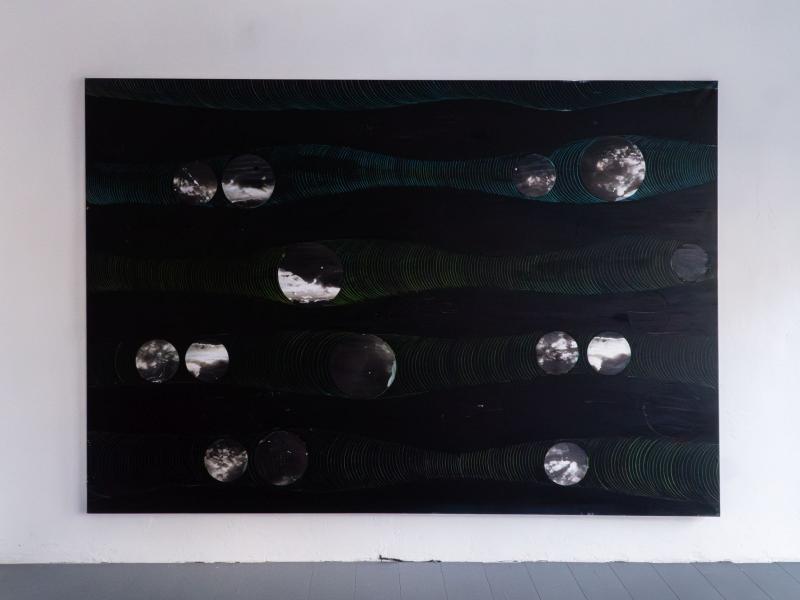The term sublime refers in particular to a quality that transcends the possibility of calculation, measurement, or imitation. Simply put, it refers to the experience that occurs when we are met with something so magnificent or complex that it “overwhelms the mind.” We feel both our own smallness and an admiration for and fascination with the perceived phenomenon. The category of the sublime was a major theme in antiquity, with a resurgence in the eighteenth century, when modern aestheticians connected this type of experience and evaluation with the feelings evoked by the grandeur of nature. Influential philosophers such as Burke, Kant, and Schopenhauer focused on the search for a relationship between the sublime and the kind of beauty that was—unlike the sublime, according to the formulated theories—related to the products of human activity, meaning art.
However, scientific knowledge and an awareness of the fundamental impacts of human influence on the natural environment has advanced to such an extent that there is no longer much room for imagination and conjecture about the mysterious processes that take place in nature. In such a situation, can we still view natural phenomena in an aesthetic evaluation using the category of the sublime and feel insignificant and at the same time full of admiration and amazement in the face of their grandeur? And can we still look at natural “wonders” without the awareness creeping into our minds that the version of nature we are experiencing now is very far from the one that evoked those feelings of the sublime in thinkers more than two hundred years ago? Today we know that there is virtually no place on our planet where the influence of man has not left its mark (usually negatively). So what exactly do we admire about natural landscapes today? And how do we look at works of art that are inspired by nature’s “grandeur”? The exhibition Storms and Stars presents several examples of such artistic approaches.
Daniel Vlček’s large-format painting Rezonance (Resonance), created in 2011, includes black-and-white photographs of the sky taken by landscape photographer Vilém Heckel in the 1970s. The main theme of this work is the depiction of a symbolic planet and a journey through space, with an emphasis on the idea of leaving traces of cosmic orbits. This concept is rooted in electromagnetic resonance, which is influenced by the chemical composition of celestial bodies and the gravitational forces acting on them. Furthermore, the work explores the concept of fundamental resonance, which leads to a transformation of the shapes of the planets and cosmic matter itself. The circular forms of the flying planets in the work are cut out to resemble the shape of gramophone records. This reference to records as a musical medium is purely because they are carriers of analogue sound. The decision highlights the connection between the celestial and musical worlds and points to analogue sound as a metaphor for the exploration of the resonance of the artist in the cosmos. Rezonance serves as a depiction of a cosmic journey and of the transformational effects of resonance in the universe, drawing inspiration from, among other things, early abstract modernist painters who believed in the existence of supernatural forces.
In the second part of the installation, the space is filled by the quadrophonic sound installation Celestial Bodies at the Venice Fish Market (2023), a field recording from Venice’s bustling Rialto Fish Market that gradually shifts from day to night. The installation combines the sounds of the market during its busiest hours with the singing of friends, passers-by, and volunteers recorded throughout the night. The planned recording eventually turned into a happening where random passers-by joined in. Inspired by the notations of “The Music of the Spheres” and “Celestial Music” as well as the concept of “Musica Mundi,” the underlying principle of the tonality of this recording is the tonality of the planets in our solar system as imagined by the ancient philosophers. Specifically, the author was inspired by the Greek thinker Boethius, who was interested in the geometrical principles of music and applied them to the distances of the planets and their possible harmonies. With the exception of the moon and the stars, the sounds in the symphony are tuned to the celestial bodies of the solar system. It is an exploration of the esoteric perception of the cosmos, offering a perspective on the interplay between sound and the harmony of the universe and human existence.
One can surrender to these sounds amidst scenery designed by artist and architect Savka Marenić, who has also inscribed fragments of her special connection to the moon into the shape of a costume for the exhibition. In the same room, one can find a watercolor by artist Anežka Hošková, whose work also includes an impressive stained-glass piece in the gallery window. In addition to taking inspiration from natural phenomena, Hošková draws thought-provoking parallels between the experience of external grandeur and that of its internal counterpart in the form of the emotions and feelings that the surrounding phenomena, in all their horror and splendor, evoke in us.
The starry sky is then literally reflected, or rather materialized, in the object-embroidered painting entitled Stella Maris by Dagmar Šubrtová. In this work, we can clearly see the themes of structure, the universe, inner and outer awareness, and crystal, which, however, need not be perceived dogmatically but rather as a certain visual impulse toward a broader context, where the viewer poses questions about the meaning or laws of the world. Even Pythagoras realized that the fundamental system of reality, the first abstraction, is numerical ratios—numbers whose relations can be observed in all imaginable and unimaginable realities.
Veronika Čechová





